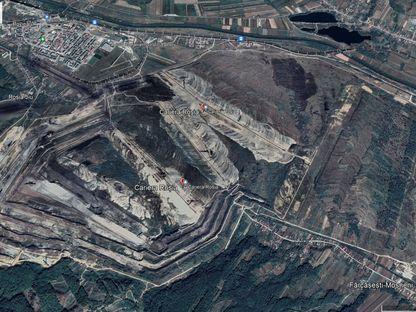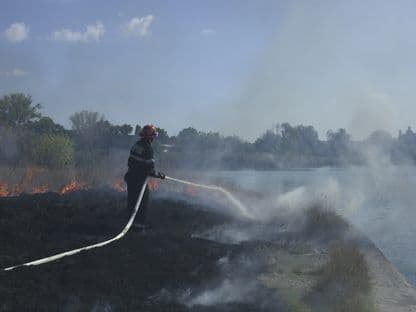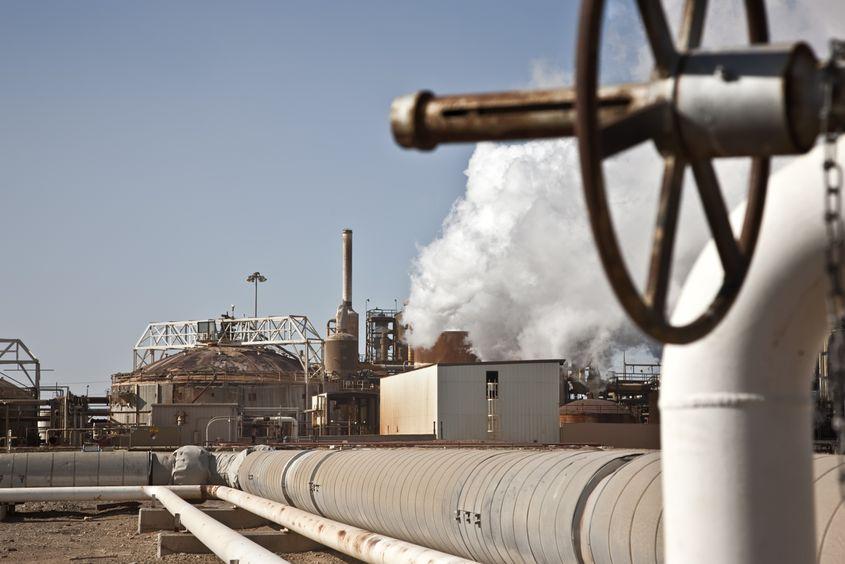Entire areas of Romania could be heated with groundwater, but authorities don't prioritize such projects. Photo: Bobreynolds | Dreamstime.com
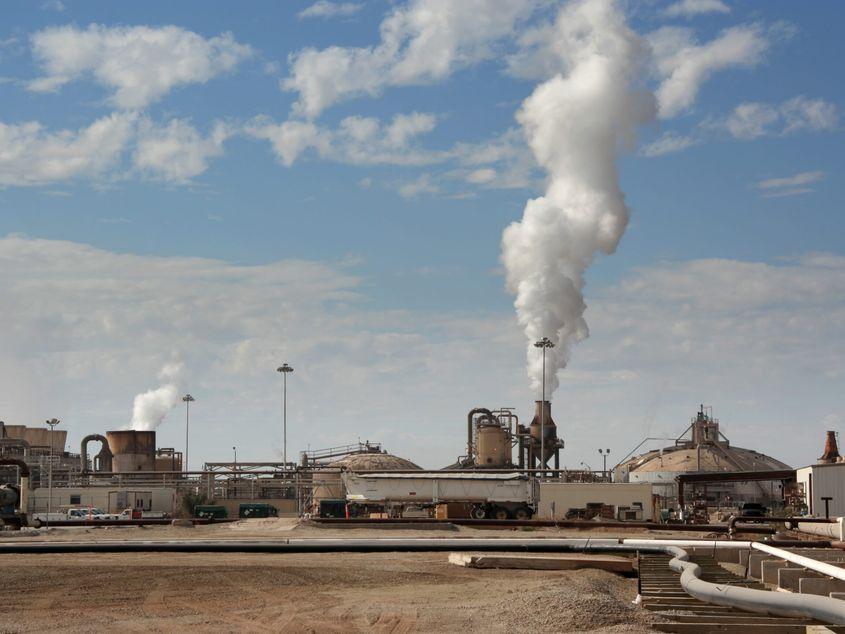
Entire areas of Romania could be heated with groundwater, but authorities don't prioritize such projects. Photo: Bobreynolds | Dreamstime.com
25/07/2024
Romania's geothermal energy has "fantastic potential", but is "neglected" by state authorities
Entire areas of Romania could be heated by groundwater, but authorities do not prioritize such projects.
Romania has a huge geothermal potential, but the underground water is used at minimal capacity, Liviu Buzilă, a geomorphologist and professor at the Faculty of Geography at the Babeș-Bolyai University in Cluj-Napoca, told PressOne.
The reservoir can be exploited for spa purposes to boost local tourism, but it can also be a more environmentally friendly alternative for heating homes.
The use of geothermal water for district heating would mean that hot water, already heated, would flow through the radiators of cities with hot springs, like a spa, directly from the magma of the earth's crust.
- Beiuș, a town in Bihor, and the Nufăr neighborhood in Oradea are examples of best practices in Romania that use geothermal resources for the city's district heating network.
- Neighborhoods in northern Bucharest could be in the same situation, as the area is located on one of the most important geothermal water reservoirs in Europe, but which has remained untapped for the last eight years.
- One reason why the project has stalled is because the geothermal water in the capital is too deep - more than three kilometers deep. This makes access difficult and increases the costs involved in the infrastructure, Buzilă explained to PressOne.
- A single borehole in Bucharest could cost an estimated €6 million, says the expert consulted by PressOne.
- Another impediment is also the large amount of minerals in the thermal waters, which block the flow of water through the pipes. Thus, the costs for the resource's filtering capacity are added to the total.
PressOne asked Liviu Buzilă, among other questions, whether a geothermal spring can support home heating.
Mulți ne citesc, puțini ne susțin. Fără ajutorul tău, nu putem continua să scriem astfel de articole. Cu doar 5 euro pe lună ne poți ajuta mai mult decât crezi și poți face diferența chiar acum!
PressOne: What is geothermal water and how does the process work whereby it can be further utilized?
Liviu Buzilă, geomorphologist: Geothermal water mainly comes from areas where there are faults in the earth's crust and where surface water can reach deep underground, where there is still magma that has not cooled. There it heats up very strongly, and due to the pressure created by the heating, the geothermal water rises to the surface.
The entire Carpathian plan is delineated by such faults. Romania has two very, very important magmatic-volcanic zones. One in the Apuseni Mountains and one in the Western Eastern Carpathians. Some areas are Băile Herculane, Vața, Moneasa, from the Western area of the Apuseni Mountains, Băile Felix, and Geoagiu Băi. There are faults along the Carpathians and transversely across the Carpathians.
There are also some perpendicular faults. For example, the Mures Valley, Zam area, Deva, up to Geoagiu, very important. From Geoagiu, another 20 km to the west, there are many valleys where there are mineral water springs. In the Boiu Valley, the Rapoltului Valley, the Vărmaga Valley, everywhere there are geothermal waters that are not being used and could be exploited.
The geothermal water comes out on these faults at the surface and heats up very strongly, because the magma in these areas has not yet cooled down at very great depths.
Defrișări pentru cărbune. Cum au fost tăiate peste 470 de hectare de pădure pentru extinderea unor mine din Gorj
În ultimii șase ani, peste 470 de hectare din fondul forestier național au fost oferite de guvern, fără compensare, Complexului Energetic Oltenia (CEO) pentru extinderea sau deschiderea unor noi cariere de cărbune. În aceeași perioadă, România și-a asumat, prin PNRR, eliminarea treptată a producției de energie pe bază de lignit și huilă, precum și închiderea etapizată a minelor până în decembrie 2032.
Deși incendiile de vegetație se înmulțesc, în Europa numărul pompierilor scade
Incendiile de vegetație devin un fenomen tot mai amplu și mai grav în toată Europa, însă numărul pompierilor angajați în fiecare țară este tot mai mic.
How could geothermal water be used? Can we expect to run spa-like water through radiators in cities with geothermal springs?
We can expect that too, but bear in mind that geothermal waters are highly mineralized. These minerals will deposit on any kind of pipe, on any kind of pipeline, and in an extremely short time, they will destroy them, they will sink them. In a few years, the pipes through which this water flows will be clogged. Therefore, it would involve major expenses in terms of filtration, in terms of trying to remove these minerals.
They can definitely be used where they are close to the surface and very deep drilling is not necessary. There is a geothermal zone in the north of Bucharest, but it's deep. Drilling for this area will have to be done a few kilometers away, around 3-4 km. The water could, at most, meet some requirements of the kind of geothermal resorts where people could go, have a good time, but I don't think you can go as far as meeting the heating requirements of a housing estate.
Un newsletter pentru cititori curioși și inteligenți.
Sunt curios
Keeping in mind also that having a very high mineral content, everybody there will have to use special products to clean their pipes, because otherwise they will clog very quickly. But if this problem could be solved, it would probably be feasible to use this geothermal water for certain points.
How could one reverse the mineralization of geothermal water?
With filters. Only with filters. Or by a basin in which you collect a lot of thermal water and dump all the mineral load into those basins, and the water that leaves is without the mineral load, just the right temperature. That's also possible.
Why do you think these resources are not being tapped?
Romania's geothermal potential is currently utilized to a very small extent. Just look at what's happening at Băile Herculane, which used to be over Karlovy Vary in years gone by. At the moment they are a disgrace, a disgrace and a disgrace. There, if the Romanian state got involved in renovating the existing buildings, it would be a paradise. With proper management, Băile Herculane would be exactly what it once was, Europe's leading spa resort.
Everyone knows that the Bobâlna Valley has geothermal water. At the moment, cattle graze around here and all the ponds are full of overgrown weeds that are left to lie fallow. We are immobile. We don't make any decisions on that point of view.
Everyone knows that the Rapolt Valley has geothermal water. You don't have to do any more work here, because the water is on the surface. It just comes out, you don't have to dig for it. As it is in Felix, as it is in Moneasa, as it is in Băile Herculane. Why is it not done? That depends only on the county administration. In this case, Hunedoara.
Besides the spa potential, how reliable are these waters to be used as a thermal agent?
Probably very many cities in the western part of Romania could be supplied with thermal water from those areas, practicing some not very deep boreholes, because there the thermal water is relatively close to the surface.
Bucharest, unfortunately, sits on a slightly different tectonic plate and there the thermal water is deep, so you have to dig about 3 km to get to the thermal water. We're a very tectonically active area and you can find such thermal waters almost everywhere. The important thing is if you are willing and if it is possible to dig up to 3, 4, 5, 6 km to get the water.
The reservoir can be exploited for spa purposes to boost local tourism, but it can also be a more environmentally friendly alternative for home heating. Photo: Mel Surdin | Dreamstime.com
What characteristics does geothermal water need to have in order to be harnessed for home heating or to power spa resorts?
As far as tourism is concerned, they can be easily marked on the map as a very good mineral spring and people come for the benefits. Those who analyze the water can say that it is a mineral spring great for digestion, locomotor, or encouraging people to bathe in it or drink it. So it's very simple for tourism.
For district heating it is a bit more complicated. It depends on the volume of water you have. You can't heat with one cubic meter per second. You need a large volume and you have to be absolutely sure that this volume is constant. That is to say, you don't end up with big fluctuations at certain times.
If the water depends on the surface a lot, you might have big fluctuations. If it doesn't depend on the surface and depends only on the depth, then things are fine.
In addition, the temperature has to be raised to a certain level because, for example, if you have 18 degrees water at the source and you send it through the pipes in the winter period, it gets cold. You have to make a very clear calculation of the source, the point of consumption, how deep the pipes are, and how long it takes for the water to cool down.
From what I've seen, Bucharest is suffering in terms of heating. Water leaves the central heating plant at 50 degrees and reaches the consumer at 17 degrees and then it's over, you can't use it anymore. So, in this case too, studies need to be carried out to see whether we can start from this temperature of, say, 50 degrees and reach the consumer, which is 5 km away. Let's see during the winter period how much it costs us, how much temperature is lost on the route, until it reaches the consumer, so that we can make sure that the consumer has a reasonable temperature. Otherwise there is no point in doing this.
Currently, in which areas is geothermal water being utilized and in what way?
The most important utilization areas in the country are currently Băile Herculane, Geoagiu and Băile Felix, and secondly Băile Tășnad, in the northern part of the Carpathians, in the Western Hills.
There are still some points around Pecica where it is exploited, but only at a local level, not at a level of national impact, where tourists can go and see. There are at Rapolt, at Bobâlna. There are pools in the area, people go bathing there, they have fun, but not with the impact that these resorts that we have already talked about have.
Beiuș is also in the same category, but it doesn't have any facilities that represent a tourist center where you can go with your family on weekends to relax. They use it for heating.
Could geothermal water reservoirs, where they exist, be a solution for the transition to a less polluting form of heating?
They already are. And they are the best solution, of course. Even Oradea has the Nufărul neighborhood, which has geothermal heating. And anyway, everything in the Băile Felix area, there's a large number of hostels and they all have geothermal heating.
At the level of Bucharest, specifically, which are the neighborhoods that could exploit geothermal water deposits?
There is an area in the Central-Northern part of Bucharest - and I understand that there are even a few boreholes there, but they are very deep, more than 3 km. A single borehole could cost somewhere over €6 million.
It is not feasible to heat with geothermal water if it is very deep. Because the cost of bringing the water to the surface may far outweigh the benefits for those who heat with geothermal water.
In terms of environmental impact, what would the use of geothermal water to heat homes mean for Bucharest?
If a study were to show that it is possible to bring in geothermal water, then that would be a tremendous gain, because geothermal water is a tremendous ecological and sustainable element. You no longer use all kinds of fuel to heat that water. It comes directly heated. So it's an asset that you invest almost nothing for. And if the source is checked and found to be long-lasting, it's the biggest possible gain. Ecologically, but also in terms of sustainable development.
Again, in the case of Bucharest, I don't know if there are any concrete data at the moment on what it would cost to bring water to the surface and use it for a few neighborhoods, for example. These are all answers that could come from projects that would check the exact volume of water, water quality, water temperature. All these calculations have to be made about how much we lose in temperature from the source to the consumer.
The point is that we have fantastic potential, very little used, only in a few points that we know of and which are already old in terms of tourism. There could be many other points to develop, but that is up to the county and local government.
In February 2024, ELCEN's director signed an agreement with American experts to find out where in Bucharest they can dig for good geothermal water for heating. How do you comment on this?
It's a very good thing. Any kind of project that goes towards renewable resources and sustainable development is a very, very good project. Because you can use this resource as long as it exists. I mean the moment it stops you can't do anything more. You can't ruin anything there. You use the result without a brutal, harsh or sudden intervention in that resource. It's not the same as cutting down the forest, for example.
___
This article is published as part of the Energy4Future project, co-funded by the European Union. The European Union is not responsible for the information and opinions expressed in the course of this project and article. The sole responsibility for the content lies with PressOne.
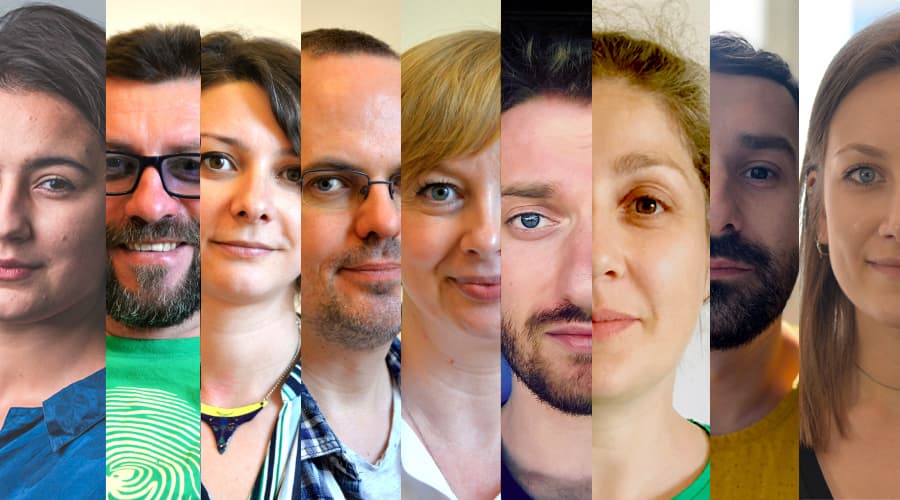
Avem nevoie de ajutorul tău!
Mulți ne citesc, puțini ne susțin. Asta e realitatea. Dar jurnalismul independent și de serviciu public nu se face cu aer, nici cu încurajări, și mai ales nici cu bani de la partide, politicieni sau industriile care creează dependență. Se face, în primul rând, cu bani de la cititori, adică de cei care sunt informați corect, cu mari eforturi, de puținii jurnaliști corecți care au mai rămas în România.
De aceea, este vital pentru noi să fim susținuți de cititorii noștri.
Dacă ne susții cu o sumă mică pe lună sau prin redirecționarea a 3.5% din impozitul tău pe venit, noi vom putea să-ți oferim în continuare jurnalism independent, onest, care merge în profunzime, să ne continuăm lupta contra corupției, plagiatelor, dezinformării, poluării, să facem reportaje imersive despre România reală și să scriem despre oamenii care o transformă în bine. Să dăm zgomotul la o parte și să-ți arătăm ce merită cu adevărat știut din ce se întâmplă în jur.
Ne poți ajuta chiar acum. Orice sumă contează, dar faptul că devii și rămâi abonat PressOne face toată diferența. Poți folosi direct caseta de mai jos sau accesa pagina Susține pentru alte modalități în care ne poți sprijini.
Vrei să ne ajuți? Orice sumă contează.
Share this


